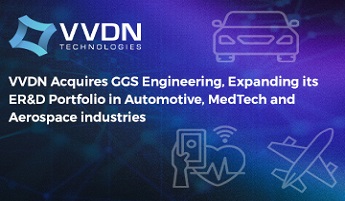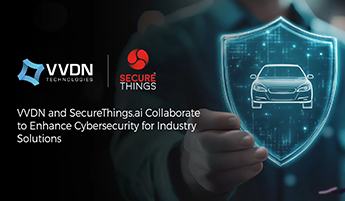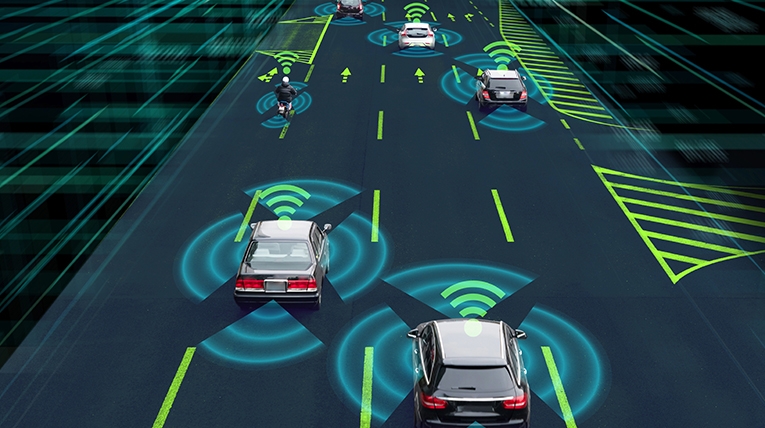Autonomous driving has evolved from a futuristic vision into a rapidly maturing reality. The convergence of advanced driver-assistance systems (ADAS), artificial intelligence, edge computing, and cloud-connected ecosystems has accelerated the development of highly automated and self-driving vehicles. Yet, behind the sleek perception modules and decision-making algorithms lies a highly regulated and technically challenging foundation shaped by rigorous functional safety, AUTOSAR architecture, cybersecurity frameworks, and country-specific standards.
Let’s take a deeper look at how these pillars—AUTOSAR, Functional Safety (ISO 26262 and ASIL classification), Cybersecurity (ISO/SAE 21434), and global regulations—are intertwined in enabling safe, secure, and reliable autonomous systems, and how evolving market trends are shaping the roadmap for OEMs and Tier-1 suppliers.
AUTOSAR: The Software Backbone of Autonomous Architectures
AUTOSAR (AUTomotive Open System ARchitecture) is central to the development of complex automotive software. It was established to standardize software architecture across ECUs (Electronic Control Units), promote software reuse, and reduce development complexity.
There are two main pillars:
- Classic Platform (CP):
Optimized for traditional ECU architectures—body control modules, powertrain control, chassis, and infotainment functions. CP offers a layered architecture comprising Basic Software (BSW), the Runtime Environment (RTE), and application layers. In autonomous vehicles, Classic AUTOSAR still supports non-safety-critical functions and some deterministic controls. - Adaptive Platform (AP):
Designed to handle dynamic, high-performance, and service-oriented applications such as perception fusion, path planning, and over-the-air (OTA) updates. AUTOSAR AP runs on POSIX-compliant OS (e.g., Linux or QNX) and supports technologies like DDS (Data Distribution Service) for high-bandwidth communication.
In autonomous driving stacks, AUTOSAR Adaptive is often used alongside Classic for mixed-criticality deployments. For instance, perception algorithms and AI-based object detection pipelines run on Adaptive Platform nodes with hardware accelerators (e.g., GPUs), while deterministic control loops and fail-operational safety mechanisms remain on Classic Platform ECUs.
Functional Safety: ISO 26262 and ASIL Classification
While automation introduces unprecedented capabilities, it also increases system complexity and risk. ISO 26262, the de-facto global standard for Functional Safety of Electrical and Electronic Systems, mandates rigorous development processes to mitigate hazards arising from random hardware failures and systematic design errors.
Automotive Safety Integrity Level (ASIL) is the core classification scheme in ISO 26262. It quantifies risk based on Severity, Exposure, and Controllability.
- ASIL A: Low Safety Requirement
- ASIL B: Moderate
- ASIL C: High
- ASIL D: Highest (e.g., brake-by-wire, steer-by-wire)
Autonomous vehicles frequently involve ASIL D elements due to their potential to cause hazardous events without driver intervention. For example:
- Perception Failure: Camera misclassifies pedestrians (ASIL C/D)
- Actuation Error: Steering actuator fault (ASIL D)
- Decision-Making Logic: Path planning error resulting in collision (ASIL D)
Key Functional Safety Practices Include:
- Safety Goals and Concept: Top-level safety requirements derived from Hazard Analysis and Risk Assessment (HARA)
- Technical Safety Requirements (TSR)
- Fault Tree Analysis (FTA) and Failure Modes and Effects Analysis (FMEA)
- Hardware Metrics: Single Point Fault Metric (SPFM), Latent Fault Metric (LFM)
- ASIL decomposition and freedom from interference
Integration of functional safety in autonomous driving must account for redundancy, diversity, and fail-operational design. A common approach involves redundant sensor modalities (e.g., camera + radar + lidar) and safe-state fallback mechanisms.
Cybersecurity: ISO/SAE 21434 and UNECE WP.29
Autonomous vehicles are essentially IoT devices on wheels—connected, data-rich, and exposed to cyber threats. This has led to the emergence of new regulatory and standardization frameworks:
- ISO/SAE 21434: Defines requirements for cybersecurity risk management throughout the vehicle lifecycle, including threat analysis and risk assessment (TARA), secure boot, intrusion detection, and cryptographic key management.
- UNECE WP.29 Cybersecurity Regulation (R155 and R156): Mandates OEMs to demonstrate robust Cybersecurity Management Systems (CSMS) and Software Update Management Systems (SUMS) to obtain vehicle type approvals.
Cybersecurity Implications for Autonomous Vehicles:
- Sensor Integrity: Spoofing attacks on GNSS, camera blinding, or radar interference
- Control Systems: Unauthorized control of acceleration, braking, or steering
- Data Privacy: Breach of user data and driving profiles
- OTA Updates: Risks during remote software deployment
Integration of cybersecurity with functional safety—often referred to as Safety of the Intended Functionality (SOTIF, ISO/PAS 21448)—has become indispensable. While ISO 26262 addresses failures due to malfunctioning behavior, SOTIF and cybersecurity standards handle unintended behaviors and malicious threats.
Regulations and Standards Impacting Autonomous Driving
Autonomous vehicle deployments are governed by a mosaic of international, regional, and national regulations:
- UNECE WP.29 Regulations: Binding in over 60 countries including the EU, Japan, Korea. R155 (cybersecurity) and R156 (software updates) are now mandatory for new vehicle approvals.
- FMVSS (Federal Motor Vehicle Safety Standards, US): While FMVSS is evolving, NHTSA has issued Automated Vehicles 4.0 guidance emphasizing voluntary safety self-assessments and transparency.
- China GB Standards: China has accelerated regulations for autonomous driving (e.g., GB/T 40429-2021 on functional safety) and mandates data localization.
- Japan and Korea: Following UNECE but adding local interpretations for test procedures and liability frameworks.
- Euro NCAP and NCAP Programs Globally: Assessment protocols are increasingly incorporating ADAS and autonomous safety performance scoring.
Regulatory fragmentation requires global OEMs to adopt modular architectures, configurable safety/security strategies, and regional compliance workflows.
Market Trends and Country-Specific Dynamics
Several market trends are reshaping autonomous driving technology:
- Transition Toward L3 and L4: Most OEMs are targeting Level 3 (conditional automation) deployments, while robotaxi developers are piloting L4 operations in geo-fenced environments.
- Convergence of SDV (Software Defined Vehicle): Central compute platforms with zonal architectures are replacing distributed ECUs, leveraging high-performance SoCs.
- Edge AI Acceleration: Growing demand for AI accelerators, GPUs, and FPGAs to process sensor fusion and perception workloads in real-time.
- Cybersecurity by Design: OEMs are increasingly embedding secure development lifecycles, V2X security, and continuous monitoring.
Country-specific highlights:
- United States: Strong focus on L3+ testing in states like California, Arizona, and Texas. Startups (Waymo, Cruise) are driving commercialization.
- China: Aggressive investment in smart cities, HD mapping, and local SoC ecosystems (Horizon Robotics, Huawei).
- Germany: Legislation enabling L4 operation in defined conditions (Autonomous Driving Act), with strong emphasis on ISO 26262 and UNECE compliance.
- Japan: Government-led initiatives to deploy L4 in rural mobility applications by mid-decade.
- India and Southeast Asia: More nascent adoption due to infrastructure challenges but growing focus on ADAS and autonomous shuttles in controlled environments.
The Road Ahead
Autonomous driving is a multidisciplinary challenge at the intersection of safety-critical engineering, AI, and cybersecurity. The path to widespread adoption demands:
- Scalable AUTOSAR-based architectures that blend Classic and Adaptive platforms.
- Rigorously engineered functional safety processes to achieve ASIL D compliance.
- Holistic cybersecurity practices from design to operation.
- Regional regulatory alignment and market adaptation.
Success requires engineering expertise, robust development ecosystems, and strategic partnerships across the supply chain.
How VVDN Technologies Supports Global OEMs and Tier-1 Suppliers
At VVDN Technologies, we empower the world’s leading automotive innovators in their autonomous journey. From AUTOSAR Classic and Adaptive Platform development, ISO 26262-compliant functional safety engineering, and end-to-end cybersecurity solutions to hardware design, validation, and production, VVDN delivers integrated capabilities tailored to the unique needs of autonomous driving programs.
The VVDN team partners closely with OEMs and Tier-1 suppliers to accelerate time-to-market, ensure compliance with international standards, and build the next generation of safe, secure, and intelligent mobility.
To learn more about our Automotive capabilities or explore collaboration opportunities, contact us at info@vvdntech.com.
























